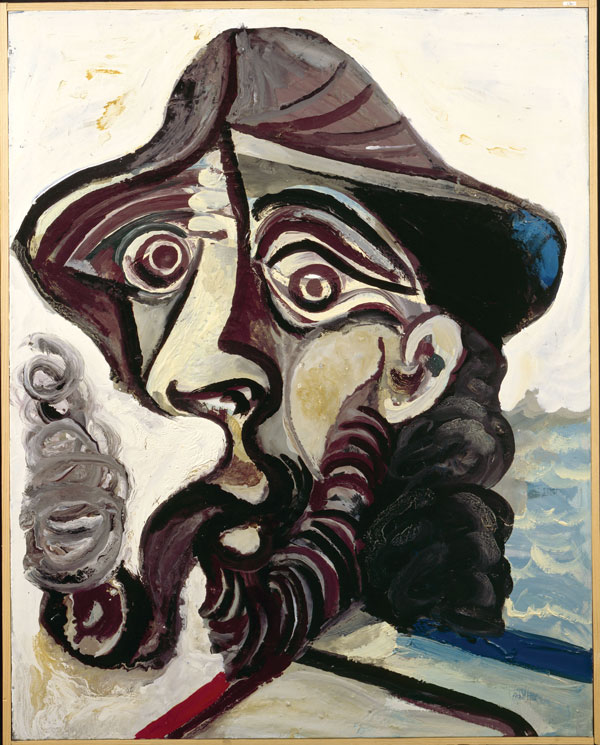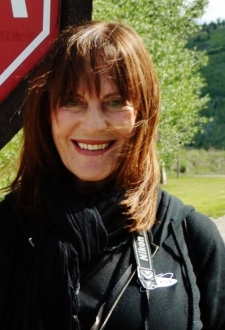“I don’t paint what I see but what I feel.” — Pablo Picasso
The light shimmers bright and golden on a cerulean sea. The soft, warm breeze stirs the palm trees and threatens to take my napkin off into the blue. I’m sitting at a terrace café on the Côte d’Azur, drinking a cappuccino and asking my friend Karen to pinch me to prove I’m not dreaming. Since the beginning of the 20th century, many of the world’s greatest artists have made this the birthplace of modern art. Painters have long celebrated the sensational light, the sensual climate, the diversity of the landscape and the beauty of the Mediterranean.
Both on the Riviera and in Provence, my group of five women have the lucky opportunity to view the exhibits, studios and homes of Pablo Picasso, as well as those of Henri Matisse and Paul Cézanne — two painters who had a profound effect on the artist.
Southern France played an essential role in Picasso’s life and the soul of this great Spanish artist continues to be felt here, so we began our sojourn in Nice, a city that has been a muse for centuries. Indeed, it prompted Matisse to exclaim: “When I realized I would see this light every morning, I could not believe my good fortune and I decided to live here for the rest of my life.” Nice is elegant and trendy, cheerful and bustling, and when the sea spray meets the fragrance of the tall Aleppo pines, this town is downright bewitching.
Nice is a particular delight in winter, as there are small, sweet pleasures such as experiencing Old Nice filled with locals, not tourists. Museums are uncrowded and markets serve hot spiced wine and hot chocolate so thick you’ll need a spoon. The grand winter-only Ferris wheel on Place Massena is guaranteed to thrill and Sunday afternoon winter orchestra concerts will charm. Nice hosts one of the world’s major carnival events. It takes place again next year from Feb. 16 through March 2.
We visited the Musée Matisse de Nice, a Genovese-style villa filled with his masterpieces and personal possessions. After the museum, walking around the town, we experienced a deeper sense of appreciation for Nice as we saw it now through the eyes of Matisse. Our hotel, the Beau Rivage, just happens to be where Matisse himself lived until the end of his life. Sadly, my room there is not the one he occupied, but from my window the view of the sea and the special niçoise light is exactly what the artist saw and that alone suffices.
Next, we went to the Riviera town of Vence. There’s an Old Town of quirky houses showing the patina of time and a walk through its colorful market captivated us with the scent of delicious herbs and bouquets of lavender. Here we found the Villa Le Reve where Matisse lived and worked from 1943 to ’49. Today it’s a charming house that can be rented by groups of artists. After touring the studio, we descended upon the garden where a small gathering of Swedish women were working at their easels on the vast sloping lawn, all the while taking their inspiration from the grand master. Matisse named this place “The Dream,” a name that is spot-on.
The enchanting Musée Picasso, formerly the Château Grimaldi at Antibes, lies amid the calm beauty of pine groves. This is the first museum to be dedicated to the painter, and it is home to some 245 of his works. This exceptional space includes his lyrical work “La Joie de Vivre” — the joy of living — with flute-playing fauns, dancing goats and a female nude modeled on his then love, Françoise Gilot. Antibes has grand estates, dense vegetation and park-like settings. A visiting F. Scott Fitzgerald wrote of it: “We’ve found a splendid location — a big house, the seaside and the casino is not far away.” Apparently the Fitzgeralds were enchanted by Antibes, as were we.
Vallauris is known for Picasso as well as glass and ceramics. The town dates from 1501, though there’s been a settlement here since Celtic times. Picasso came in 1948 where he discovered the art of ceramics. From then until 1955 when he left, he created 4,000 ceramic works — and his mural “War and Peace,” his last great political composition. It is a powerful work that takes the viewer from the horrors of war to peaceful times. Picasso depicts his belief that all is possible through peace with images of a boy plowing the sea, fish swimming in a bird cage and birds happily existing in a fish tank. In the town square we come upon Picasso’s rarely exhibited bronze, “Man With a Sheep” that the artist gave the town in 1950 when he was made an honorary citizen. We then stroll to the bottom of the Avenue Georges Clémenceau, finding an area awash with fun shops selling pots, glass and, of course, ceramics. Vallauris — an altogether delightful place to visit.
Leaving the Riviera and driving to Provence, we notice the landscape begins to change dramatically, from exotic plants and palm trees to purple mountains and fields filled with yellow rape flowers.
In Aix-en-Provence at the Musée Granet we view an exhibit that brings together a hundred works by Cézanne and Picasso and see the significant influence Cézanne had on Picasso throughout his life. Of Cézanne, Picasso said, “He was my one and only master.” I discover firsthand how the paint colors Cézanne favored were used again and again in Picasso’s works. It was interesting to compare the artists’ works. Two in particular were most revealing — Cézanne’s “Man with a Pipe” and Picasso’s “The Smoker.” In these two paintings, Picasso, inspired by the Cézanne work, painted essentially the same subject but in abstract form. We also visited the Château of Vauvenargues that lies at the foot of the Sainte-Victoire Mountain, where Picasso worked and died. In this austere castle he now rests alongside his wife, Jacqueline.
Picasso was deeply attracted to the city of Arles, whose extravagant atmosphere, climate and bullfights reminded him of his birthplace, Spain. The town is known as “the daughter of the South” and cultivates a way of life that cries out to be sampled — on terraces, in shaded alleyways or beneath trees in tiny village squares — and boasts seven UNESCO-ranked World Heritage monuments. We visited the Musée Réattu, which houses 57 drawings and two paintings by Picasso, including the charming “Portrait of Maria,” Picasso’s mother.
As Picasso said, he did not paint what he saw but what he felt. “We need to get to the bottom of the story,” he said, “and see all the pictures underneath a picture. I have tried, by destructuring, to illustrate and help reveal the hidden picture.” On this magical journey through Picasso’s landscape, I feel what he felt and, as his feelings were revealed through his work, I gain a profound and lasting insight into his world.
For more, visit francetourism.com.


